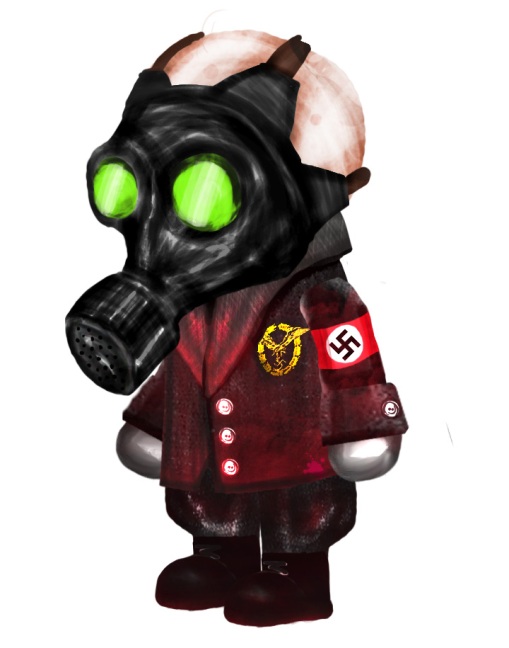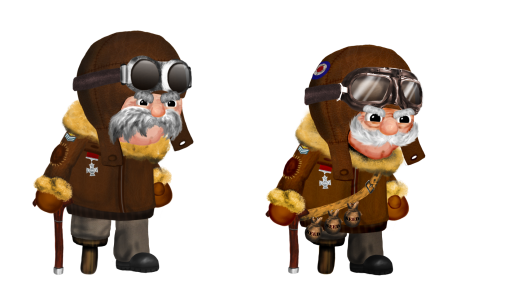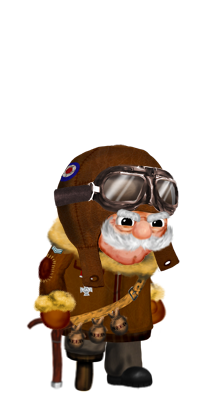Ok, so it’s been stupidly long since I updated on here, but admittedly, I’ve had my head down and I’ve been working. As of now, all of the Animations/Menu’s/Character designs and Prints are finished.
I’m going to reflect on the finished pieces in this very long article!
1. The London Rooftops Video.
This video was the hardest to do, It’s the one I “cut my teeth” on and it threw up the most “learning experiences” (read: mistakes) Due to the number of layers and frame rates I was working with, I had serious problems even getting After effects to preview it, let alone render the finished thing. The solution in the end was to sacrifice some depth in the background, merging multiple layers. Comparing the before and after you can hardly tell any difference. The video is also of quite a slow pace, but with some key moments of excitement mixed in. This was originally intentional, as this is intended to be an early level in the game, where the player would still be learning the ropes. However – on reflection, it is perhaps too slow, and could of been more exciting. Time restrains prevented me from redoing this though – and all told the video is still more than satisfactory and I am very happy with it.
2. Factory Escape Video / Artwork
Set at a much faster pace than the other 2 videos, this one required management of many events and effects in a shorter period of time. Perhaps the biggest challenge in this video was the movement of Cooper and the Pigeon carrying him. This is a player controlled action and, as such, must appear to flow in a natural way, the player would react to objects and obstacles quickly and intuitively. Movements could most certainly not be roboticor appear scripted and forced.
I managed this by liberal use of the bezier movement tool in After effects, tweening objects between 2 points and changing the “curve” and the speed of the path that movement follows.
I think in the final video I’ve done a reasonable job of making it appear that a player is guiding Cooper, not that he is on a set demo path (which is in fact the reality)
Artwork: creating the artwork for the factory was a real test. As the second piece of level art, it had to stylistically and thematically match the first. But it also had to be uniquely recognisable as it’s own location. This meant realsing what made the London level stand out.
– A liberal use of outlines on all elements, windows, boxes, girders – etc
– Seemless dark brick textures.
These things gave the factory a link to the london rooftops, however. This leve is set much further into the narrative at a much more progressed and difficult time. There is more destruction, and more chaos.
I’ve also tied destroyed brickwork and lots of fire together with the existing backdrop work from before to link the two in terms of location.
3. Boss encounter.
This video went much smoother with the existing 2 under my belt – I knew how to make after effects work efficiently at this point. That said, i was faced with the challenge of scripted set events. Like a “cut-scene” this depicts part of the game that has parts that will always play out the same. This is because it heavily features characters that the player does not control, the Nazi zombies, and the Main Antagonist.
I’ve achieved this by initially seperating the 2 parties, (Cooper/pigeons & Antagonist/Zombies) with separate entrances to the location, implying that one is hot on the tails of the other. The use of a frozen camera at the end suggests a non user controlled set of actions, as the camera is not following the protagonist.
Art: The art for this was much much harder to define, at first I attempted to create something similar to the interior of St. Pauls Catherdral. However, this building is too light, to spacious for the atmosphere of the occult I wanted to project. The church needed to break the real world ties of the game and take a more design sympathetic route. To this end i’ve created an interior by hand that echoes the gothic nature of the church one imagines when they think of the dark ages. Filled with candles and cold black/blue bricks. This level now provides the perfect backdrop for the explosions of green projected from the antagonist in action.
4. Improvements to the pigeons:
Looking at real animations and studies of flight, It became obvious that I would have to animate a full wing flap in order to achieve the correct appearance of flight. Fortunately the Puppect tool in after effects allowed me to do this with a comparative ease and more than satisfactory result – given the alternative of hand drawing each frame of the flap (something I doubt I could of done with much clarity)
This first required some visual changes to the pigeons, which until now had looked a bit too dopey and rigid to be real birds. I had too closely stuck to the ideal of a pigeon, that of the stupid, disease ridden “vermin” not the reality, that they are actually pretty strong flyers and are not as physically “dopey” as the stereotype may purvey.
5. Creating Different zombies. The different locations require different zombies, after all, the people of London do not all look the same. However to have a theme of enemies per level is something of a video game staple, so I’ve stuck to Zombie “teams” per area. Really, this was just a case of “re skinning” my photo shop files. Because After effects reads the layers of a PSD it is possible to copy the psd, edit all the layers in place (i.e. add different clothes, colours etc) and then reimport onto the existing animation. You then need to tweak it all to ensure it fits, but it’s still an efficient and effective way of using existing resources and creating “new” animations and characters from them.
The vidoes will all shortly be viewable on my youtube channel. http://www.youtube.com/user/xerowalsh

















